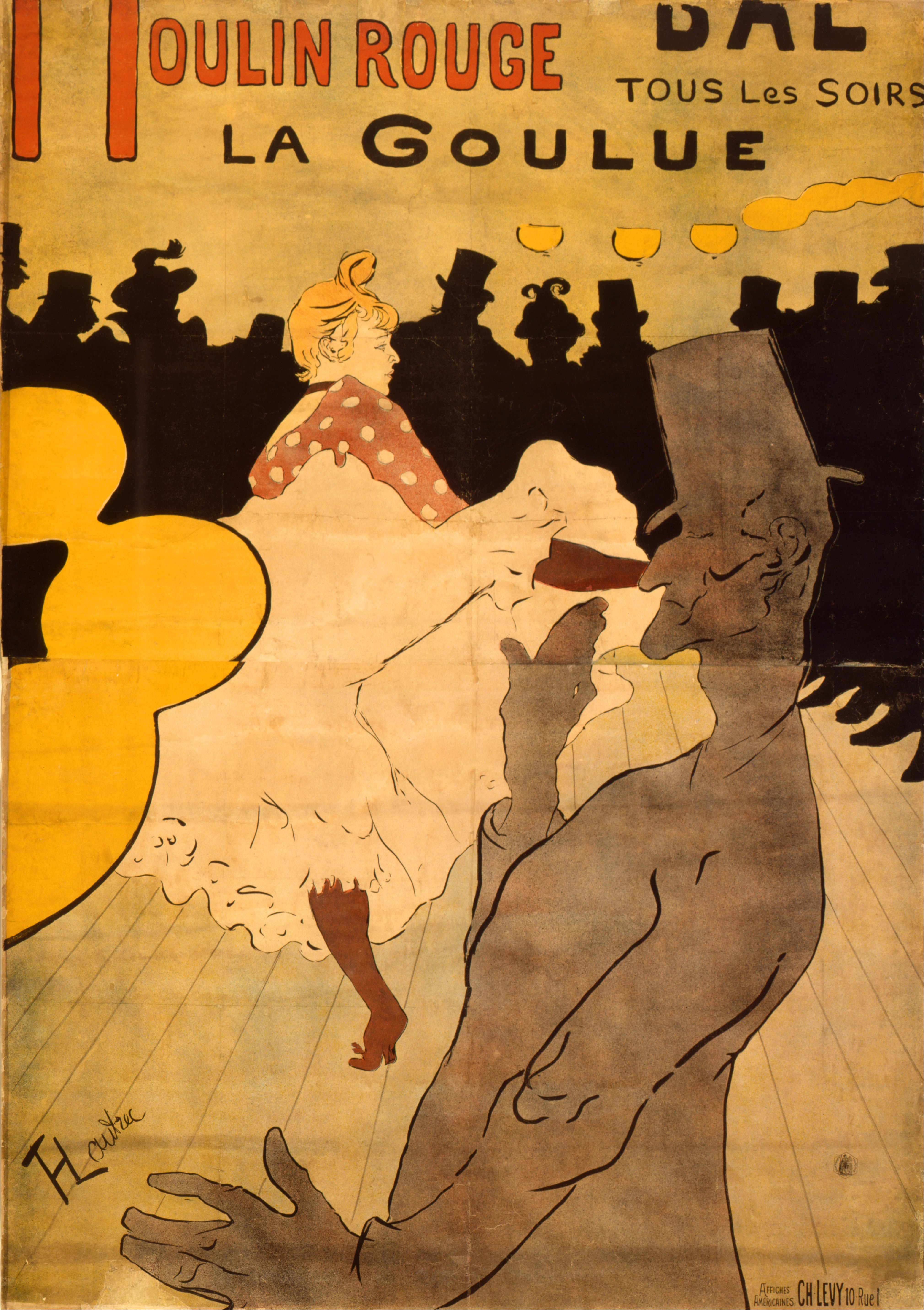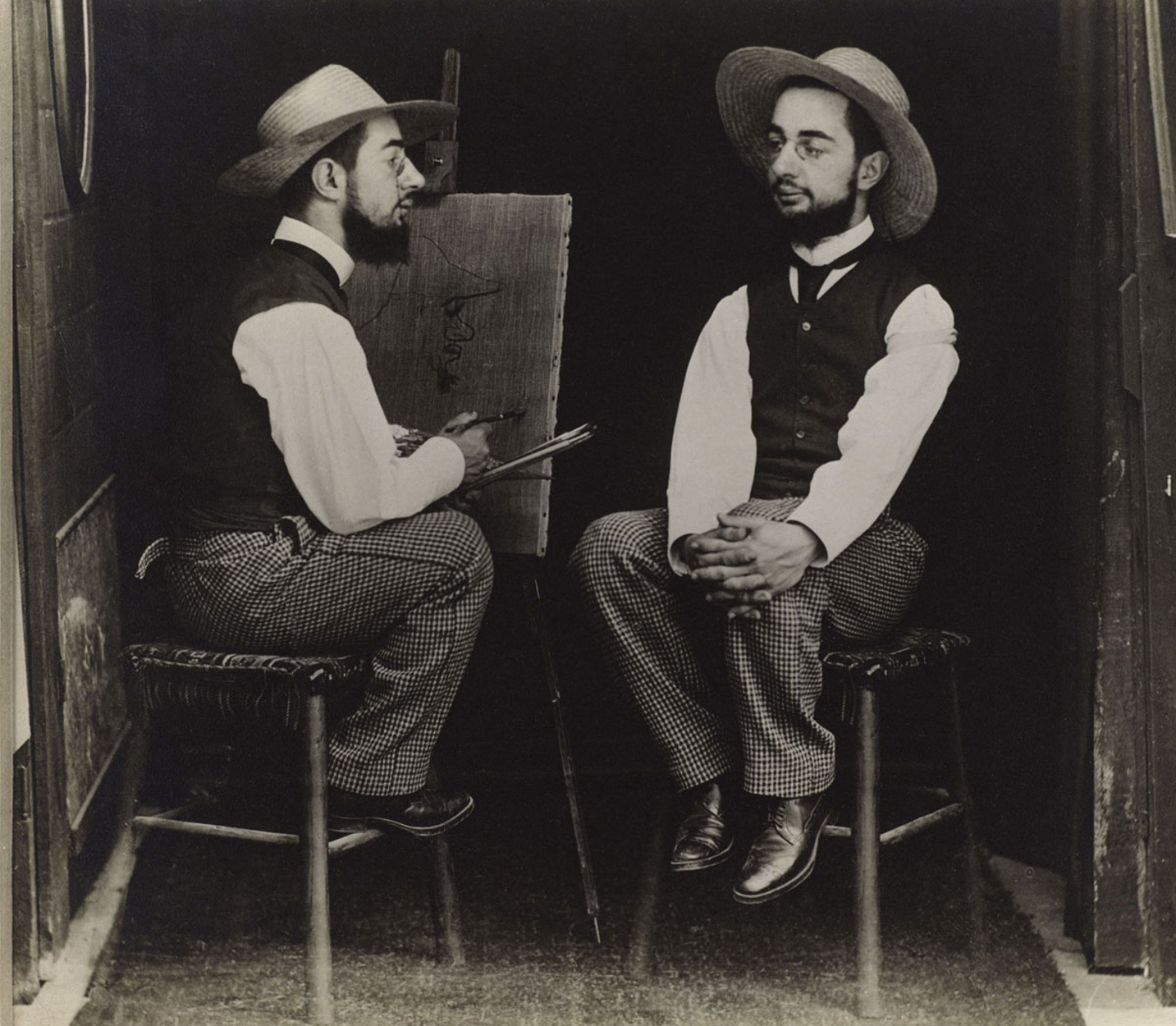Moulin Rouge, La Goulue is a poster by French artist Henri de Toulouse-Lautrec. It is a colored lithograph, and probably had a print run of about three thousand copies. It advertised the famous dancers La Goulue and "No-Bones" Valentin and the new Paris dance hall, The Moulin Rouge.
The audience is reduced to silhouette in order to focus our attention on the performers and evoke the Japanese art then in vogue. The triple repetition of the club's name draws our focus to the central figure in the poster, La Goulue herself. The stark white of her petticoats, depicted with just a few lines on the white paper, epitomizes Toulouse-Lautrec's boldly simplistic style, a sharp break from the text-heavy posters of the day. The Moulin Rouge had opened two years earlier, in 1889, and instantly established itself as a Montmarte landmark. It was renowned for the elasticity of its young dancers, (both physically and morally). The police made periodic checks to ensure that they were all wearing underwear. However, the poster by Jules Chéret, advertising the club's delights, was thought relatively subdued, so the director Charles Zidler hired the young (only 27 years old) Toulouse-Lautrec to create a more vibrant poster. Although Moulin Rouge, La Goulue was Toulouse-Lautrec's first attempt at lithography, such was his grasp of the medium's possibilities that it was an immediate sensation. The three thousand copies spread around Paris captivated the public with their eye-catching design, bold colors, and innovative, Japanese-inspired use of silhouette. And Lautrec gave the poster an additional boost in popularity by cannily focusing on the dancer La Goulue, whose energetic kicks and insatiable appetites had already made her famous. His artistic skill made him a star overnight. HaHave fun tonight. And happy 2015.


 Henri de Toulouse-Lautrec
Henri de Toulouse-Lautrec